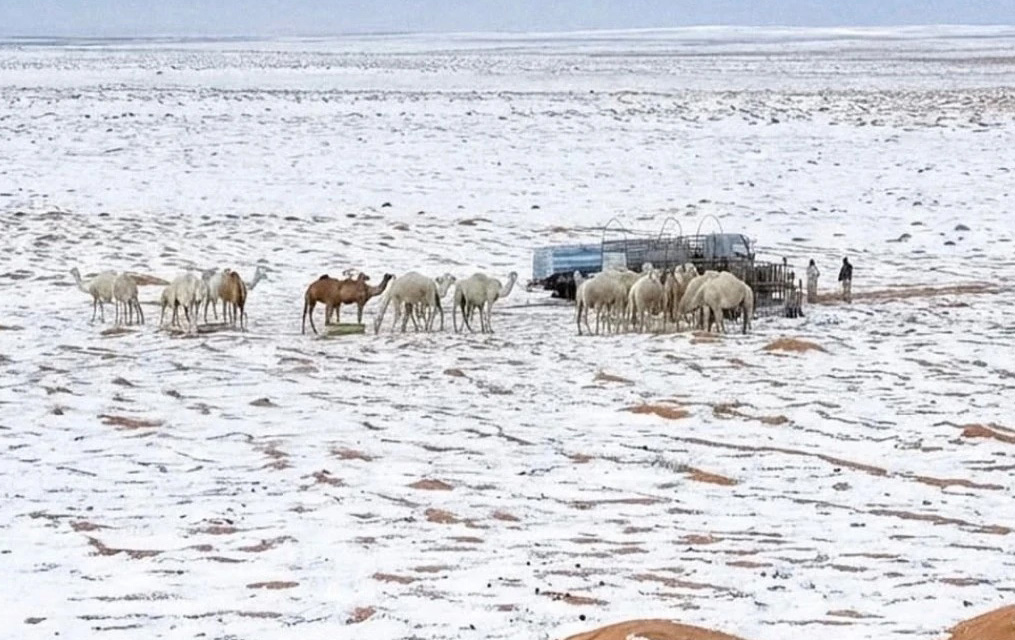
Snow blankets Saudi Arabia's deserts for first time in 30 years Watchers - December 23, 2025

A rare widespread snowfall event affected northern Saudi Arabia in December 2025, transforming desert landscapes and mountain ranges across Tabuk and Hail into snow-covered terrain.
Polar vortex patterns explain shifting US winter cold despite warming climate PhysOrg - July 11, 2025

Despite a warming climate, bone-chilling winter cold can grip parts of the U.S. In a study appearing in Science Advances, researchers found that two specific patterns in the polar vortex, a swirling mass of cold air high in the stratosphere, steer extreme cold to different regions of the country. One pattern drives Arctic air into the Northwest U.S., the other into the Central and Eastern areas.
Over half of Europe and Mediterranean basin hit by drought in mid-May PhysOrg - June 3, 2025

More than half, or 53%, of land in Europe and the Mediterranean basin were hit by drought in mid-May, according to an AFP analysis of data from the European Drought Observatory (EDO) from May 11-20, 2025. It was the highest level recorded for that period of time in the year since monitoring began in 2012, and more than 20 points higher than the average between 2012-2024 based on satellite imagery,which takes into account three benchmarks: precipitation, or rainfall, soil moisture and the state of vegetation.
How to stop being surprised by extreme weather PhysOrg - March 18, 2025

A team from the Climate Adaptation Services Foundation, the University of Reading and other international institutions has brought together methods to see beyond the limitations of conventional weather records, which typically only cover the past century.
Unraveling a paradox: Study explores why extreme cold events persist despite global warming PhysOrg - February 11, 2025

Findings show that climate change has reduced the intensity of extreme cold events.
Watch: Record-breaking snow hits northern Japan BBC - February 5, 2025

Japan sets new national 12-hour snowfall record with 1.29 m (4 feet) in Hokkaido Watchers - February 5, 2025
January 20-22, 2025 Gulf Coast blizzard - Winter Storm Enzo Wikipedia




Video: Old snowfall records were buried by Winter Storm Enzo along the Gulf Coast from Louisiana to Florida. Here's how much snow fell in some cities and how long the previous records had stood. Weather.com - January 23, 2025
Rare snow socks New Orleans as Arctic blast chills much of US PhysOrg - January 23, 2025
Historic snow amounts are falling in Florida, Louisiana and Texas as a once-in-a-generation storm hits CNN - January 22, 2025
The January 20-22, 2025 Gulf Coast blizzard was an exceptionally rare and historic winter storm and blizzard that impacted the Gulf Coast of the United States. It brought snowfall to regions of the Gulf Coast that rarely receive wintry precipitation. This historic event was the first recorded blizzard to ever impact the Gulf Coast region and the most significant winter storm in the region since 1895. The storm originated from an area of low pressure that developed in the western Gulf of Mexico along an Arctic cold front on January 20. It moved eastward and dropped historic amounts of winter precipitation along the coastlines before it moved offshore on January 22. The storm was unofficially named Winter Storm Enzo by The Weather Channel.
Conspiracy theory that Hurricane Milton was 'engineered' explained by psychologists as a mean's of gaining control Live Science - October 18, 2024

While most people turned to meteorologists for explanations, a vocal minority remained skeptical, proposing that the hurricanes were engineered, that Florida's weather was being manipulated, or even that it was targeted at Republican voters. These ideas aren't new. As psychologists, we research the roots of conspiracy theories, and have found they often emerge in the wake of natural disasters. Investigating these theories is especially crucial as extreme weather events are projected to become more severe and frequent. Conspiracy theories explain important events by attributing them to the secret actions of a small, powerful group. Yet, if we take a step back from this psychological definition, something striking becomes apparent. If conspiracy theories explain events as the actions of a small group, then conspiracy theories should only apply to events where such a group's influence is plausible.
Nature is adapting to climate change - why aren't humans? PhysOrg - September 26, 2024

Faced with the degradation of their habitat, the species that will survive will be those that are able to adapt.
Earth's weather is getting weirder. Here's why. Live Science - July 29, 2024
These weather events have happened in the past, but the problem is nowadays they're happening more frequently and to a far greater extent. What's causing this uptick in "global weirding" and is there anything we can do about it?
Climate change and natural disasters are increasing exponentially within the simulation of reality.
Coastal hurricanes around the world are intensifying faster, new study finds PhysOrg - May 3, 2024
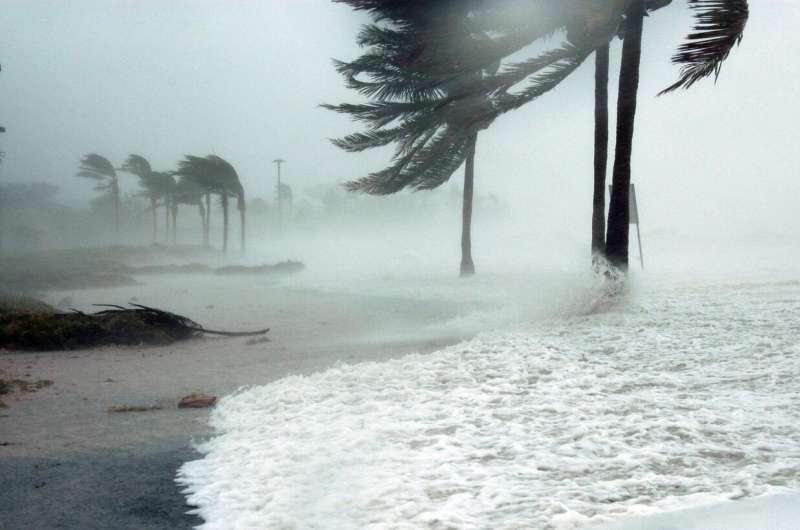
Hurricanes are among the world's most destructive natural hazards. Their ability to cause damage is shaped by their environment; conditions like warm ocean waters, guiding winds, and atmospheric moisture can all dictate storm strength.
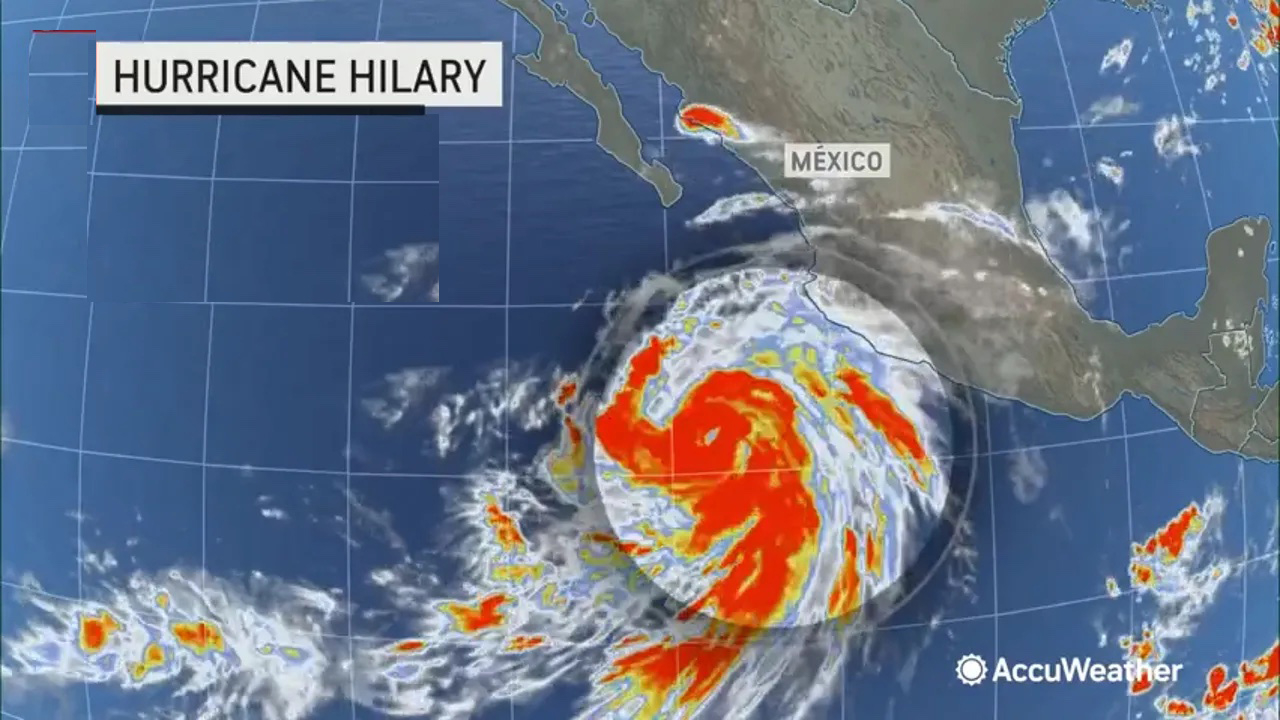
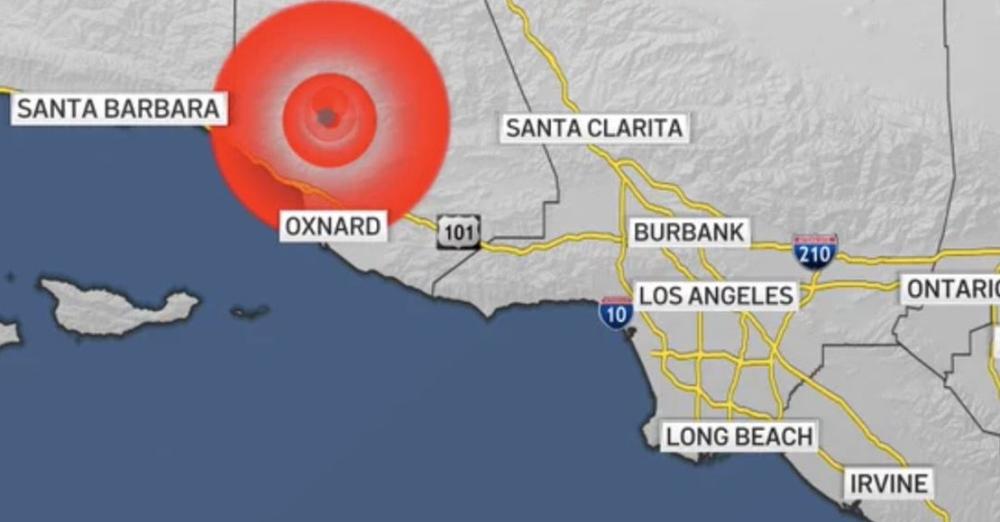
Tropical Storm Hilary, the first to cross into California in 26 years, pounded the southern part of the state with swollen rivers, flash flooding, flooded roads, mudslides and more. Authorities reported multiple water rescues, power outages and road closures as a state of emergency was declared for much of the region. During the storm a 5.1 magnitude earthquake hit Southern California - the combined events called a "Hurriquake" - though they were reported as non-related.
Colorado River Basin megadrought caused by massive 86% decline in snowpack runoff PhysOrg - July 29, 2023
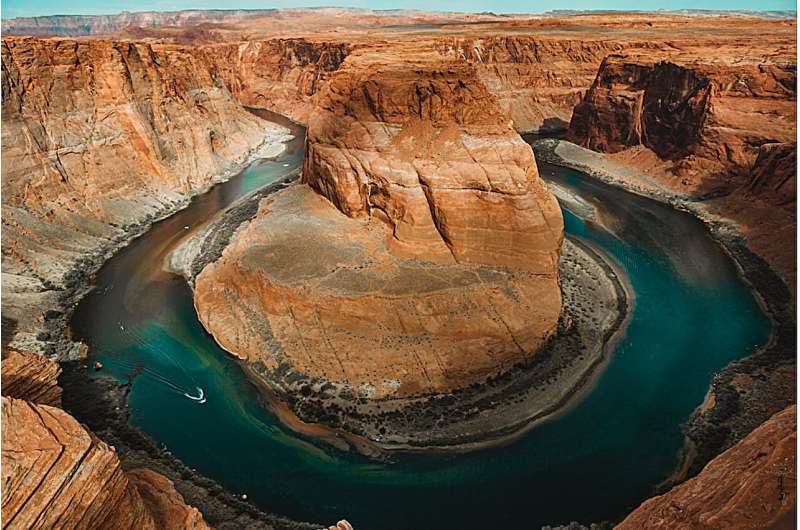
The Colorado River Basin provides freshwater to more than 40 million people within the semi-arid southwestern United States, including major cities such as Las Vegas and Los Angeles. However, between 2000 and 2021 the basin experienced a megadrought (a severe drought lasting multiple decades), which researchers have suggested likely would not have occurred if it were not for anthropogenic climate change. In particular, during 2020 and 2021, the river basin recorded the driest 20-month period since 1895 and the lowest river flow since 1906.
Extraordinary photos of July's extreme weather BBC - July 29, 2023
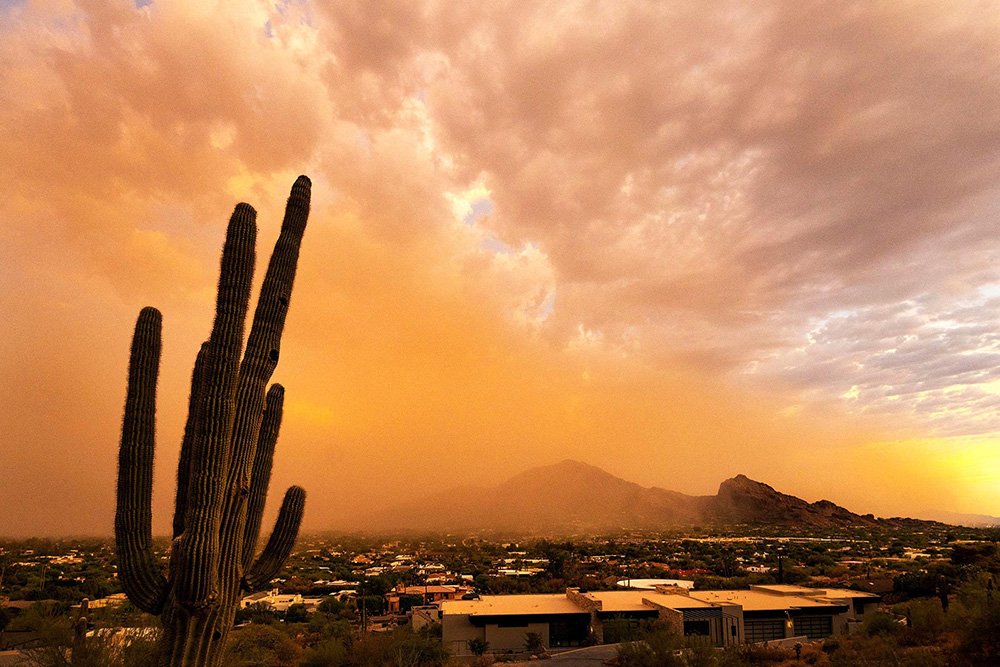
A major ocean current system in the Atlantic could be about to collapse as soon as 2025, concerning new peer-reviewed research suggests. Science Alert - July 25, 2023
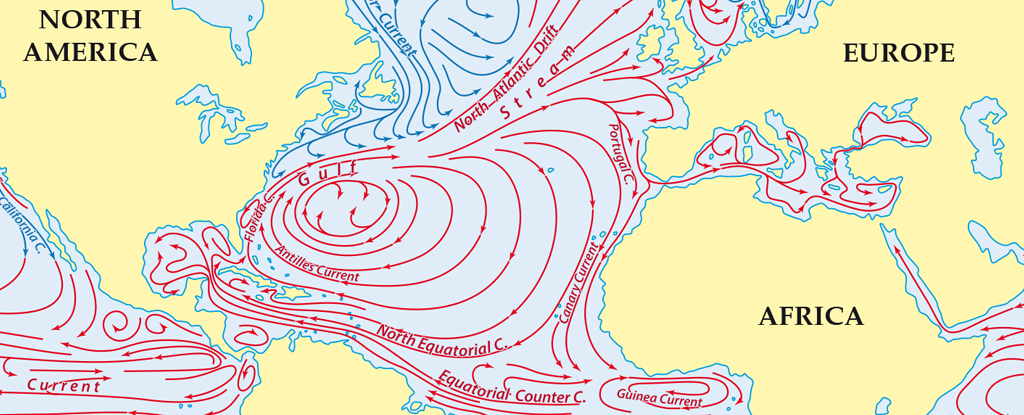
Gulf Stream current could collapse in 2025, plunging Earth into climate chaos Live Science - July 25, 2023
This is particularly concerning in light of the current heat extremes we're witnessing across the globe, including a massive departure from previous records in the Atlantic Ocean itself.
Polar Vortex And Polar Jet Stream Are Facing An Earth-Changing Upset IFL Science - July 26, 2023
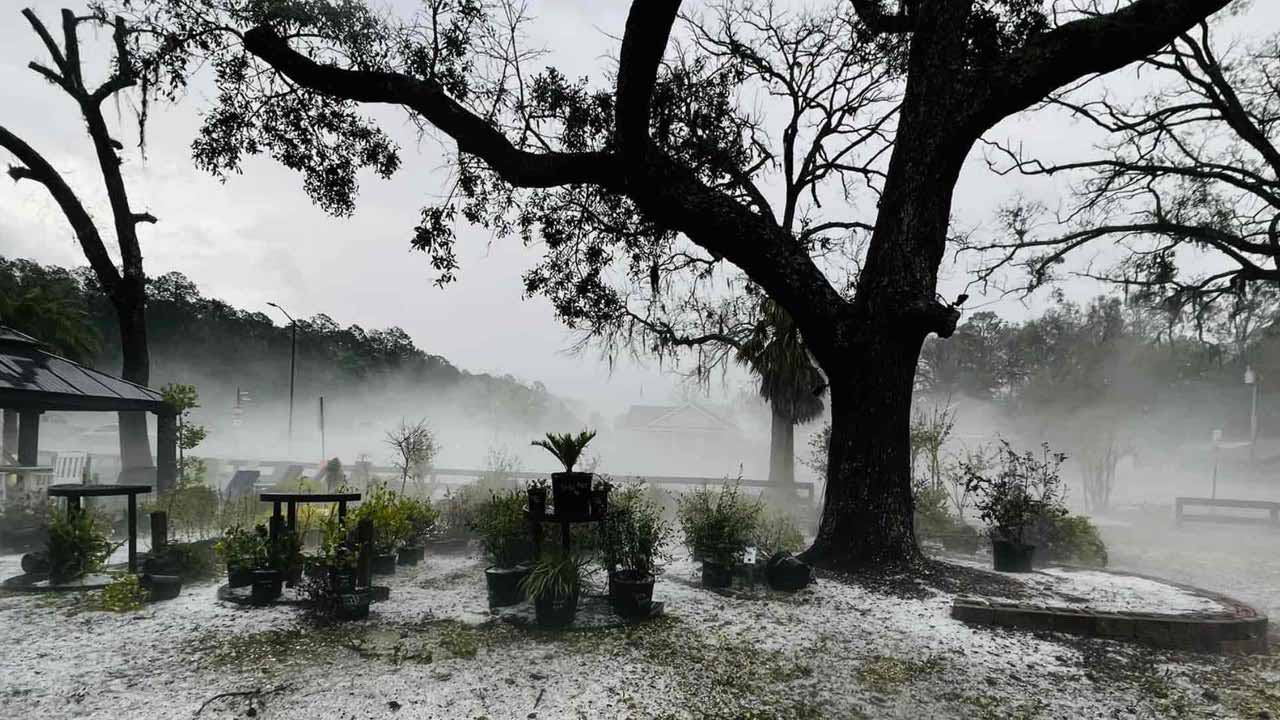
Hail is fascinating on its own, but it can sometimes create its own weather. When enough hail falls to cover the ground, it can chill the air above it, cooling it to saturation, producing what is known as hail fog. These thin veils hugging the ground usually don't last long once the air warms up again. But they add a ghostly pall to an otherwise surreal scene of accumulated hail, especially in places that usually don't see snow. Weather.com - April 28, 2023
Historic hailstorm hits Havana - one of the most important hailstorm events in known Cuban history Watchers - April 27, 2023

Large hail drops on parts of Texas and Florida as South remains at risk of severe storms CNN - April 27, 2023
What is a squall? There are different types of squalls, including a sudden windy cold front and a short-term burst of heavy snow and wind Live Science - January 31, 2023
Experts use "squall" as shorthand for "squall line" - a line of thunderstorms. A squall line is one way thunderstorms organize. It's a thin and long - though not perfectly straight - line of storms. You've likely watched a meteorologist point to such lines of storms inching across a map.

Lake Effect Snow Event produced record-breaking snow amounts around the Great Lakes highlighted in Buffalo where they had over six feet of snow.
Extremely Hot, Humid Weather Could Kill a Person Far More Easily Than We Thought Science Alert - March 7, 2022
The human body might not cope with nearly as much heat and humidity as theory predicts. One of the first studies to directly assess humid heat stress among young people has found that when humidity is at an absolute max, the upper limit of human adaptability is just 31°C (87 °F).
Rare snow and hailstorms cover Saudi desert CNN - January 21, 2022

For most people, thinking about the Saudi Arabian desert probably conjures up images of sand dunes baked by relentless sunshine. More recently, however, those sands have been covered in snow. Several recent snow and hailstorms in the region have transformed landscapes in and around Saudi Arabia, stirring excitement among locals and causing a sensation on social media. Earlier this month, Saudi photographer Osama Al-Habri captured aerial images of Badr Governorate, southwest of the Islamic pilgrimage city of Medina, dressed in white as locals gathered to enjoy the unusual sight.
Historic 2020 Atlantic hurricane season comes to a close CNN - November 30, 2020
2020 has been undoubtedly a crazy year -- with the Covid-19 pandemic, murder hornets, and some of the largest wildfires in recorded history. It seems understandable that hurricane season would also be memorable. This season was forecast to be a busy season. Two of the most well-known and respected entities that forecast their predictions for the upcoming hurricane season are Colorado State University (CSU) and the National Oceanic and Atmospheric Administration (NOAA)
Preserved leaves reveal 7000 years of rainfall and drought PhysOrg - February 15, 2019
A study by University of Adelaide researchers and Queensland Government scientists has revealed what south-east Queensland's rainfall was like over the last 7000 years - including several severe droughts worse and longer lasting than the 12-year Millennium Drought. The study - published in Scientific Reports - used preserved paper-bark tea tree leaves from North Stradbroke Island's Swallow Lagoon that have been collecting in the sediment for the past 7700 years. The leaves Ð analyzed for chemical variation-provided a wealth of information on the El Nino-Southern Oscillation (ENSO) and how it was impacted by major climate changes over the millennia, including the Little Ice Age from about 1450 to 1850. Researchers found a generally wet period about 5000 to 6000 years ago - indicating a more consistent La Nina-like climate.
A new study finds that in years where summer rainstorms in India are stronger, Atlantic hurricanes move further westward towards land. In years where the rains aren't as strong, hurricanes tend to curve northward earlier and fizzle out in the north Atlantic Ocean PhysOrg - October 24, 2018
This newly-discovered relationship could help scientists better predict the path of oncoming hurricanes, especially in late summer months like September, when Atlantic hurricane activity peaks.
Get Used to Nor'easters - Arctic Warming May Mean More Severe Winters in the Northeast Live Science - March 16, 2018
As average temperatures rise across the planet, the frozen Arctic is heating up faster than anywhere else. With that warmth comes a surprising twist: Unusually warm Arctic winter temperatures are linked to bitter cold and snow in other parts of the Northern Hemisphere, such as the northeastern U.S., parts of northern Europe and northern Asia, according to an analysis of 66 years worth of climate data.
And the relationship between Arctic warmth and severe winter weather was strongest in in the northeastern U.S. - in fact, a temperature spike in the Arctic meant that the U.S. Northeast was two to four times more likely than usual to experience a bout of extreme winter weather, the scientists reported in a new study.
Flood Facts, Types of Flooding, Floods in History Live Science - June 26, 2017
In terms of lives lost and property damaged, floods are just behind tornadoes as the top natural disaster. In the United States, flood damages totaled $8.41 billion in 2011. There were 113 flood-related deaths. Floods can affect any area to some degree; wherever rain falls, flooding can occur. As water falls to the Earth in the form of rain or snow, it seeps into the ground. But if the ground is frozen or the surface impervious (asphalt or concrete are two contenders) or the soil is already saturated and cannot absorb the water faster than it falls from the sky, problems arise.
NASA examines Peru's deadly rainfall PhysOrg - March 23, 2017
The Global Precipitation Measurement mission or GPM constellation of satellites provide data on precipitation rates and totals. Recently the GPM core observatory measured the heavy rainfall that caused extensive flooding and loss of life in Peru. Extreme flooding and frequent landslides that occurred in March have forced many from their homes. An El Nino-like condition with warm ocean waters developed near Peru's coast. This extremely warm water off Peru's western coast has been blamed for promoting the development of these storms. Equatorial sea surface temperatures (SSTs) are about average elsewhere in the central and east central Pacific.
North Pole Forecast To Be 50 Degrees Warmer Than Normal This Week Huffington Post - December 22, 2016
Temperatures in the Arctic are predicted to soar nearly 50 degrees above normal on Thursday in a pre-Christmas heat wave that will bring the frozen tundra scarily close to the melting point. It's the second year in a row the North Pole - now in perpetual darkness after saying goodbye to the sun in late October - has seen abnormally high temperatures around the Christmas holiday. It's also the second time this year. In November, temperatures in the region skyrocketed 36 degrees above normal.
Snow falls in Sahara for first time in 37 years CNN - December 22, 2016
Bob Geldof and Midge Ure are better musicians than they are meteorologists. Their 1984 Band Aid prediction that "there won't be snow in Africa this Christmastime" has once again been proven wrong -- and this time in spectacular fashion. The Algerian town of Ain Sefra, deep in the dry, hot Sahara desert was hit by a freak snowfall on December 19. It's the first time snow has fallen in the region in 37 years.
Stunning picture of rare 'white rainbow' captured in Scotland as storms hit the UK Mirror.co.uk - November 25, 2016

The beautiful 'fog bow' stunned onlookers with its magical aura shining against the bright blue sky. The rare white rainbow was captured on Rannoch Moor in Scotland. The image from Rannoch Moor in the west of Scotland was captured by Melvin Nicholson. Out walking on the moor, south of Glen Coe, he said the unbelievably beautiful white rainbow appeared before him. It is a colorless rainbow that is made up of tiny water droplets that cause fog.
Streak of Record-Breaking Hot Months Breaks Record Live Science - October 18, 2016
The National Oceanic and Atmospheric Administration (NOAA) released its global temperature data for September. It shows that the month was a scant 0.07°F (0.04¡C) below September 2015's record, making it the second-warmest September on record. That ends a streak of 16 consecutive record-setting hot months in NOAA's dataset, a record-setting streak itself. The run of planetary heat has rewritten the record books. On Tuesday, the National Oceanic and Atmospheric Administration (NOAA) released its global temperature data for September.
The Science of Monster Storms Scientific American - October 7, 2016
Extreme weather events are nothing new, but they appear to be gaining strength. Scientists have risked life and limb to help us better understand - and better survive - these storms. The deadliest and most expensive natural disasters in U.S. history, however, were both hurricanes: the great Galveston hurricane of 1900, which killed some 6,000 to 12,000 people, and the notorious Hurricane Katrina in 2005, which caused an estimated $149 billion in damages.
Currently we are dealing with Hurricane Matthew
Oldest pine fossils reveal fiery past Science Daily - March 10, 2016
The oldest fossils of the familiar pine tree that dominates Northern Hemisphere forests today has been found by researchers. The 140-million-year-old fossils (dating from the Cretaceous 'Age of the Dinosaurs') are exquisitely preserved as charcoal, the result of burning in wildfires. Scientists have found the oldest fossils of the familiar pine tree that dominates Northern Hemisphere forests today. Scientists from the Department of Earth Sciences at Royal Holloway, University of London have found the oldest fossils of the familiar pine tree that dominates Northern Hemisphere forests today. The 140-million-year-old fossils (dating from the Cretaceous 'Age of the Dinosaurs') are exquisitely preserved as charcoal, the result of burning in wildfires. The fossils suggest that pines co-evolved with fire at a time when oxygen levels in the atmosphere were much higher and forests were especially flammable.
Ocean temps predict US heat waves 50 days out Science Daily - March 29, 2016
The formation of a distinct pattern of sea surface temperatures in the middle of the North Pacific Ocean can predict an increased chance of summertime heat waves in the eastern half of the United States up to 50 days in advance. The pattern is a contrast of warmer-than-average water butting up against cooler-than-average seas. When it appears, the odds that extreme heat will strike during a particular week--or even on a particular day--can more than triple, depending on how well-formed the pattern is.
Cold Atlantic 'blob' puzzles scientists CNN - September 30, 2015
At first glance, it stands out like a sore thumb. That blob of blue and purple on the map. One of the only places on the globe that is abnormally cold in a year that will likely shatter records as the warmest globally. It's being called the Atlantic "blob." It's a large area in the North Atlantic that is seeing a pronounced cooling trend. The ocean surface is much cooler than normal and in fact record cold in some locations. Scientists began to notice it developing over the last couple of years, this cooling in the Atlantic is the complete opposite of the warming over in the Pacific. Much of the warming is attributed to El Nino, a natural process where warm water sloshes over the Central Pacific and extends to South America, but scientists are unable to completely explain what has been dubbed the Pacific Blob. This pronounced warming over large areas of the entire Pacific basin has fueled a well above average season for hurricanes and typhoons over the entire Pacific, and could have contributed to everything from the California drought, impacts on the salmon industry, and even tropical sharks seen in waters further north than ever before.
Should we fear the North Atlantic Blob? Climate scientists warn record cold in ocean may be a sign of changes to ocean currents Daily Mail - September 30, 2015
The planet is on course to experience one of its warmest years on record, but scientists have been left baffled by a massive cold patch in the North Atlantic Ocean. The area, which lies just to the south of Greenland and Iceland, is showing some of the coldest temperatures ever recorded for the region. It comes at a time large parts of the world are experiencing some of the hottest on record, raising fears the recent 'pause' in global warming has come to an end.
Chinese Cave Graffiti Tells of Ancient Droughts & Strife Live Science - August 20, 2015
An ancient cave with centuries of Chinese characters written on the walls reveals the history of severe droughts. By tying the cave graffiti to ratios of chemical elements in the stalagmites growing in the cave, a team of scientists created a snapshot of the climate over the last 500 years, said study co-author Sebastian Breitenbach, a paleoclimatologist at the University of Cambridge in England. The findings also suggest how vulnerable people in this region could be to drought.
What is a Dirty Thunderstorm? BBC - March 26, 2015
A series of astounding images of a 'dirty thunderstorm', captured by volcano film-maker Marc Szeglat earlier this month, show the earth's power at its most terrifying and breath-taking.
Dirty thunderstorms are a rare phenomenon, associated with large volcanic eruptions. But unusually and perhaps uniquely, they occur regularly at Sakurajima volcano in Japan, one of the most active volcanoes in the world.
No more pause: Warming will be non-stop from now on New Scientist - August 31, 2014
Enjoy the pause in global warming while it lasts, because it's probably the last one we will get this century. Once temperatures start rising again, it looks like they will keep going up without a break for the rest of the century, unless we cut our greenhouse gas emissions. The slowdown in global warming since 1997 seems to be driven by unusually powerful winds over the Pacific Ocean, which are burying heat in the water. But even if that happens again, or a volcanic eruption spews cooling particles into the air, we are unlikely to see a similar hiatus, according to two independent studies.
Epic Drought in West Is Literally Moving Mountains Scientific American - August 23, 2014
Climate change is driving the Greenland Ice Sheet to melt, which is contributing to sea level rise. But imagine that the same amount of water melting from Greenland each year is being lost in California and the rest of the West because of the epic drought there. What happens? The land in the West begins to rise. n fact, some parts of California's mountains have been uplifted as much as 15 millimeters (about 0.6 inches) in the past 18 months because the massive amount of water lost in the drought is no longer weighing down the land, causing it to rise a bit like an uncoiled spring, a new study shows.
World's oldest weather report could revise Bronze Age chronology PhysOrg - April 2, 2014
An inscription on a 3,500-year-old stone block from Egypt may be one of the world's oldest weather reports - and could provide new evidence about the chronology of events in the ancient Middle East. A new translation of a 40-line inscription on the 6-foot-tall calcite block called the Tempest Stela describes rain, darkness and "the sky being in storm without cessation, louder than the cries of the masses." Two scholars at the University of Chicago's Oriental Institute believe the unusual weather patterns described on the slab were the result of a massive volcano explosion at Thera - the present-day island of Santorini in the Mediterranean Sea. Because volcano eruptions can have a widespread impact on weather, the Thera explosion likely would have caused significant disruptions in Egypt.
Megafloods: What They Leave Behind Science Daily - January 17, 2014
South-central Idaho and the surface of Mars have an interesting geological feature in common: amphitheater-headed canyons. These U-shaped canyons with tall vertical headwalls are found near the Snake River in Idaho as well as on the surface of Mars, according to photographs taken by satellites. Various explanations for how these canyons formed have been offered -- some for Mars, some for Idaho, some for both.
Lunar Orbiters Discover Source of Space Weather Near Earth Science Daily - September 27, 2013
Solar storms - powerful eruptions of solar material and magnetic fields into interplanetary space - can cause what is known as "space weather" near Earth, resulting in hazards that range from interference with communications systems and GPS errors to extensive power blackouts and the complete failure of critical satellites.
Superstorm Sandy Shook the U.S., Literally Science Daily - April 19, 2013
When superstorm Sandy turned and took aim at New York City and Long Island last October, ocean waves hitting each other and the shore rattled the seafloor and much of the United States - shaking detected by seismometers across the country.